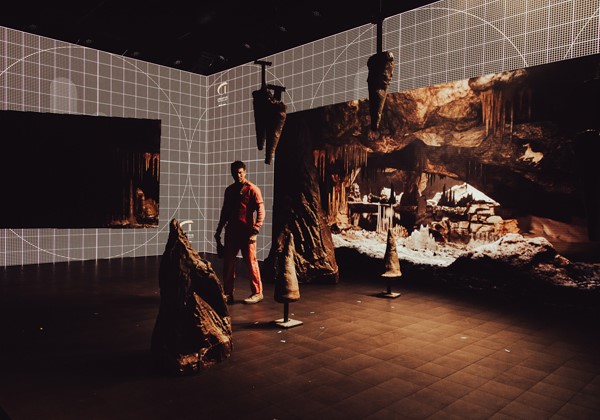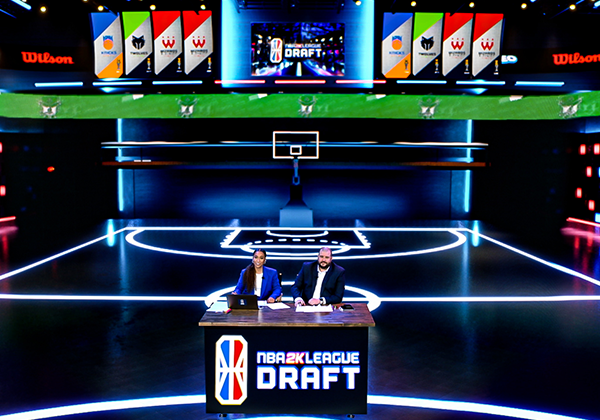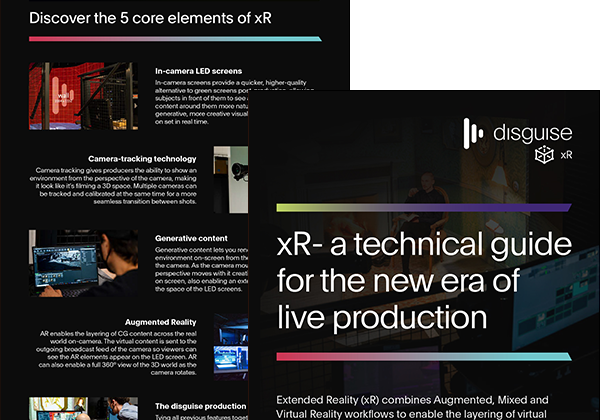
blog 2021 7 min read
Spotlight on Hungarian xR Studio Special Effects
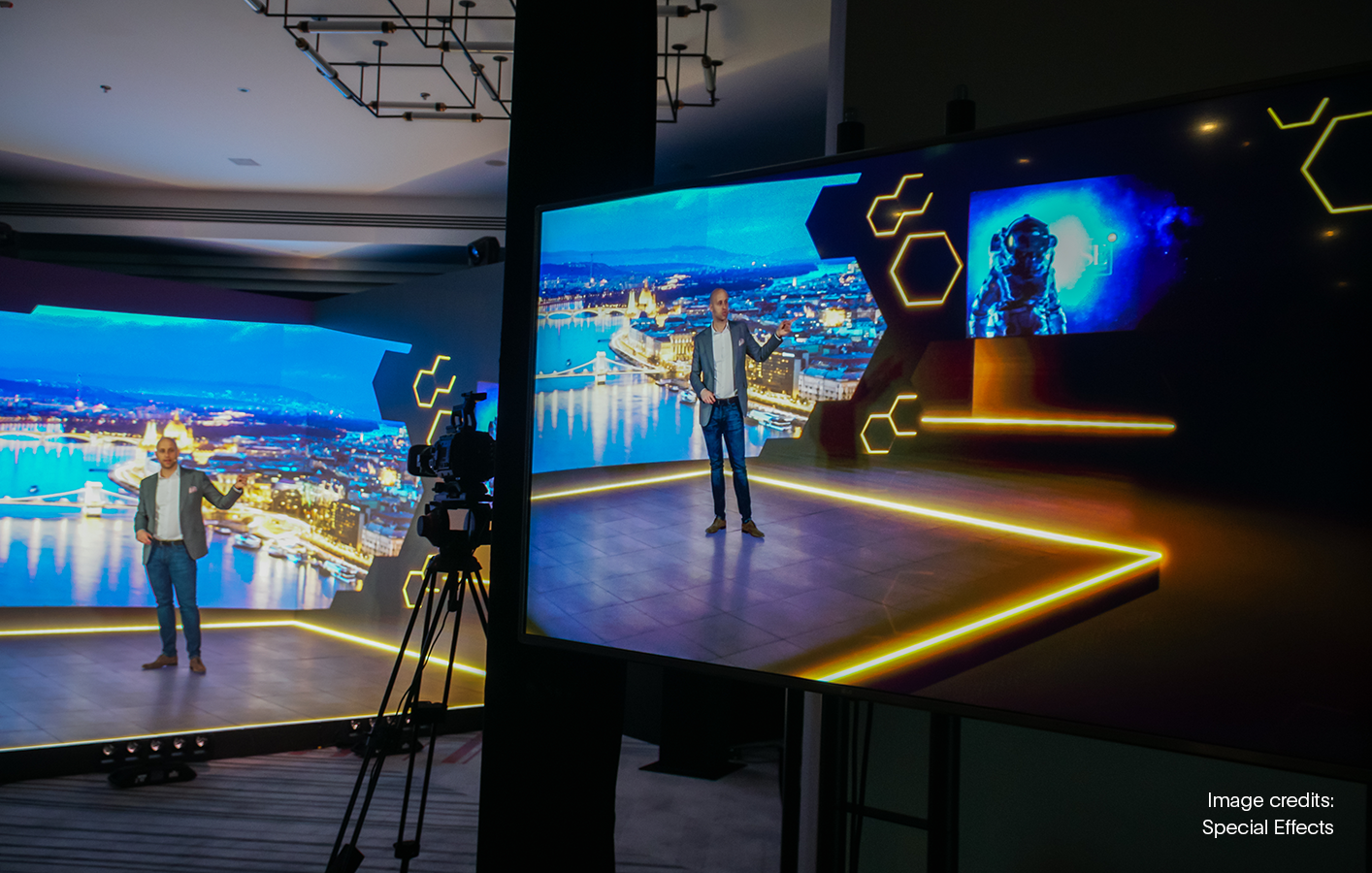
Headquartered in Budapest and with offices worldwide, Special Effects is a 40-year-old one-stop production company mainly specialising in conferences and live events. Their latest venture is their new extended reality (xR) studio based in Hungary. We spoke to Special Effects’ Director of Sales and Marketing, Tamas Szego, about moving to xR and using the disguise xR solution to lead in this new arena.
Special Effects encompasses six main divisions, including large-scale event production, hotel conference services, international event support, exhibitions, creative design as well as touring and live entertainment. Since 2020 they have expanded into offering different kinds of solutions such as creative exhibition and interactive solutions which includes permanent and temporary solutions for museums, experience centres and retail.
Built a year ago, their new xR studio represents a return to Special Effects’ early days in filmmaking. Their most recent projects include a music video for Hungarian superstar Zséda, a product launch for telecom company Xiaomi as well as various Open House demo events to educate others on the value of xR.
Equipped with an LED video wall and floor, disguise vx 4 media servers and rx render nodes, and a StYpe RedSpy camera tracking system, the xR studio is designed for film and television shoots, live-streamed events, hybrid or virtual events, commercials and music videos.
Tamas Szego spoke to us about how the studio began and all about the exciting projects the studio is bringing to life.
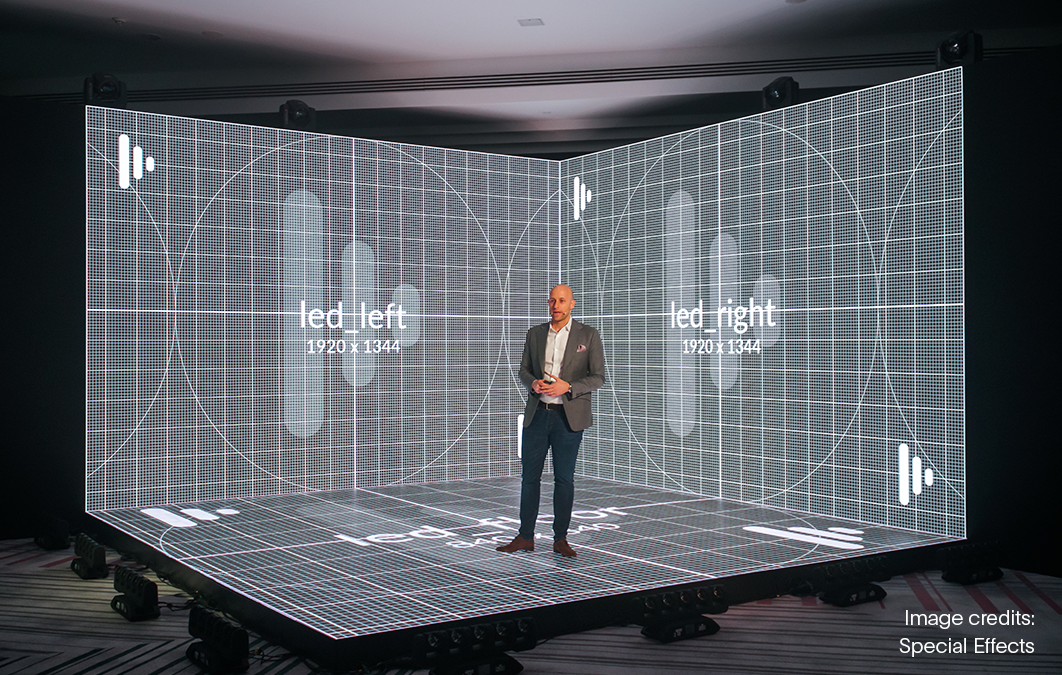
How did the idea for the new xR studio come about?
R&D for the studio started a year ago after we invested in two disguise vx 4 media servers to power the Hungarian Pavilion at Expo 2020 in Dubai. When the Expo was postponed due to the pandemic we needed to find a new application for them.
What projects has the xR studio been used on?
We built an actual xR studio at the Budapest Marriott Hotel and organised a three-day demo event for event agencies, Destination Management Companies and event organizing companies. As the demand for this event rose, we extended it to a 7-day demo Open House in April where we invited clients from the film and entertainment industry (directors, producers, cameramen and companies involved in making movies and commercials) to show them the studio and its capabilities. We ran 68 presentations to more than 100 clients on site. Our big team worked on it and got great feedback.
The Open House was a great success and resulted in telecom company Xiaomi requesting us to put our xR studio to work for their product launch, which was later streamed to eight different platforms.
We have also shot a music video for Hungarian superstar Zséda that launched in June. The song was a good fit for xR. With the title ‘Beyond the Walls’ (A falakon túl). It was about going beyond and over the physical LED video walls on the set. The artist, who is famous here in Hungary, was put into a dream world with the help of xR and we shot three to four scenes all in one day. She was the first to shoot an xR video in Hungary and has become an xR ambassador since. The director and artist were impressed with the photorealistic visuals achieved in the final result.
Tell us more about the Open House events?
We started with a blank slate and put a lot of effort and energy into the learning, training and marketing aspects of xR since you have to educate the market about its benefits. We took a little bit longer to acquire deep knowledge of xR and launched at the right time. It was exciting to see so many attend and be excited about the demo and the 15-minute presentations we created. We partnered on the project with EVOKE Studios, who trained our team and created content for us. After the demo, guests were encouraged to try out the stage to see for themselves how the virtual environment worked.
Since then, we’ve dismantled the xR installation at the Marriott Hotel, but we’re constructing a permanent xR studio in our offices, powered by disguise xR.
You were mainly involved in live events but have been transitioning to other fields. What made you move to xR?
When live events stopped due to the pandemic, we had tons of equipment in warehouses that we couldn’t use. A few AV companies started to develop xR studios because extended reality allowed customers to continue marketing their products and reach out to their audiences, albeit virtually. We saw this becoming a trend, especially after ‘The Mandalorian’ was shot using Virtual Production. We then decided to head in that direction.
In Eastern Europe, there are not many studios doing xR, and not many have the complete workflow like we do. We see the future in xR production and the many ways you can use this technology. We’ve even started to cooperate with a university on developing the field of virtual production.
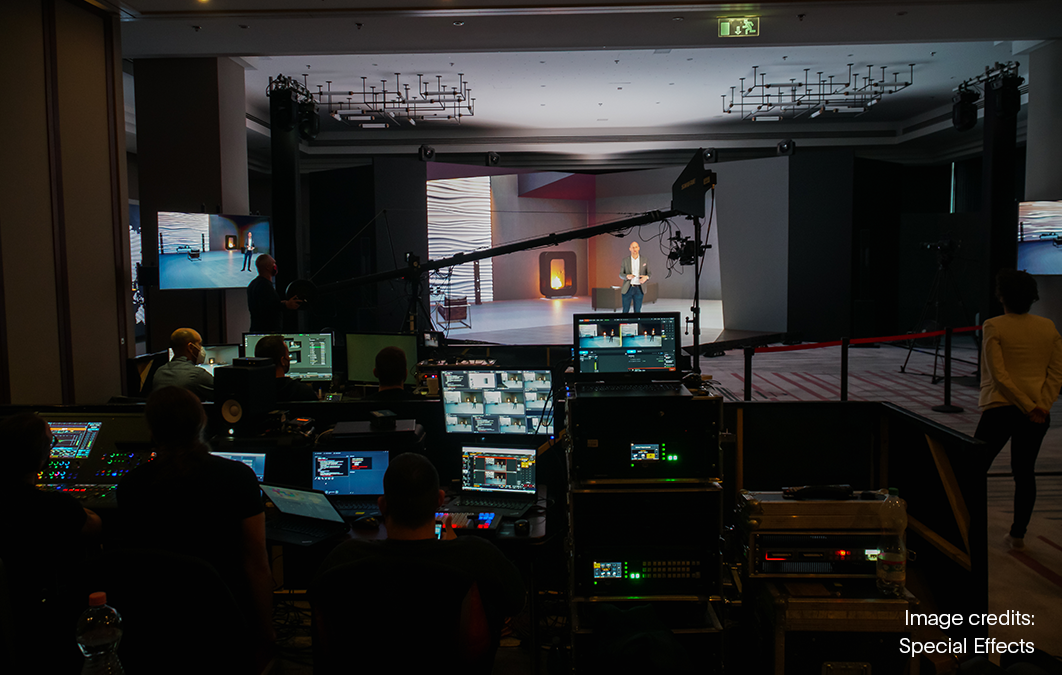
How did you first come to work with disguise?
We first found out about disguise through the AV Alliance and used disguise servers when we organised a conference called The Power of Live Events. It was a citywide live event with broad industry participation. We lit up all the famous buildings, organised a professional conference and nightly events at two locations. With this joint initiative, we wanted to show that we strongly believe in live events and that Hungarian industry professionals were ready to organise events with safety as a priority.
This campaign was changed, due to COVID-19, to be only a one-day where we did content mapping, and that’s when we used disguise for the first time.
After the success of the event, we made the decision to use two disguise servers for our work on the Hungarian Pavilion in the much-anticipated Expo 2020 event held in Dubai. The Expo is an international event that brings the world together and pushes boundaries in technical and creative capabilities in projection and unique visual solutions. Expo was originally meant to happen in 2020, yet, due to Covid-19, it was postponed and only recently had its opening ceremony on September 30, 2021.
While it was on hold we used the disguise solutions to power our xR studio.
What value does xR bring to a project?
There are many benefits of xR. I think it’s a great opportunity to make our company more versatile, enter new markets and become a trendsetter in the industry. As one of the best companies in AV production in Hungary, Special Effects can step into movies and entertainment with xR and build that division of our company. xR is a new opportunity to capitalise on and prove that we can be great at something even though it’s a new playground for us – and everybody else.
What is the number one challenge in xR, and how does disguise help you overcome it?
Our challenge right now is financial. We have limited funding compared to pre-pandemic times in 2019. We also need to keep up with the constantly changing technology as well as educate our market about something as new as xR and show them the benefits.
xR is versatile but also requires a lot of knowledge. We need to keep up with the training of our crew, too.
Luckily, disguise offers a good support network, and we are in touch with a lot of other disguise users who form a tight-knit community.
Join our disguise Community portal to connect with other disguise experts.
As in-person events start to come back, how do you think virtual tool sets like xR will change things?
Even though the industry will eventually return to live production, xR will remain available for many applications like music videos or advertising. It is going to be a good option for certain projects going forward, such as virtual events as we can create xR hubs across the globe and connect different xR studios worldwide.
xR is not just a substitute for live production during the pandemic. It will be a great tool, especially for entertainment, after the pandemic. Its values cannot be matched, especially for virtual production and film.
Discover more about disguise xR
